Black History Month is a time to remember the role that people of colour have played in forging our history.
This Black History Month, we’re celebrating our Focus on Diversity columnists making their articles, previously published in Bulletin magazine, open access for those outside the profession to learn from and enjoy.
We’ll also be updating our anti-racism resources and reading lists. Join us on Twitter and Instagram using the hashtag #SLTAntiRacism to tell us who you’ll be celebrating or learning more about this month.
Angela Whiteley and Heeral Davda


Originally published in the August 2020 issue of Bulletin
Over the last few weeks, the collective voices of black and minority SLTs have swelled to a crescendo, echoing experiences of discrimination that span across decades. As we listened, leaders and creators of change emerged, powered by the voices of their peers. Angela Whiteley and Heeral Davda are two such leaders. Bulletin caught up with them to hear about the launch of their Instagram platform ‘SLTs of Colour’.
Q: You created the Instagram page ‘SLTsofColour’. How did that come about?
A: The page was created as we felt frustrated: the issues that impact therapists of colour within the profession were being overlooked. The delayed support, advice and guidance at a critical time led to the creation of ‘SLTs of Colour’.
Q: Why is a platform like this important?
A: It’s important for us to raise awareness, to keep the conversation around diversity going and to ensure that the voices of the few are heard. Our hope is that we build a positive and safe community to share experiences without fear. We want the platform to become a support network for prospective and current SLTs to share useful resources, access information on supporting their clients and colleagues from diverse backgrounds, and to encourage cultural understanding and feel represented.
Q: What can the profession do to help support this platform and others like it?
A: Our profession works with diverse service users, and as SLTs we focus on creating a sense of inclusion for those service users. We would like to see the profession have the same expectation of inclusion for therapists. This starts with understanding and acknowledging the very real experiences of those who have bravely shared their stories, both within our Instagram page and beyond. We want the profession to actively support therapists from diverse backgrounds to navigate through a profession where they are under-represented and, in some cases, discriminated against.
Q: What plans do you have for the future?
A: ‘SLTs of Colour’ is a small piece of the puzzle. We see ourselves being part of a much bigger discussion around diversity and inclusivity across the whole profession. We are encouraged by the actions that are already taking place and look forward to seeing what changes this will bring.
Angela Whiteley and Heeral Davda, SLTs and founders of @SLTsofColour, sltsofcolour@gmail.com
Natalie Bryan
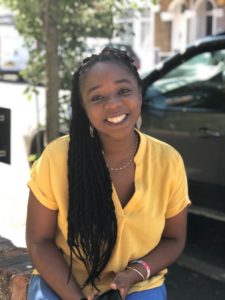
Originally published in the September 2020 issue of Bulletin
As one of only three people of colour on her course, Natalie Bryan speaks on the importance of representation within the profession.
Through out my school years I never heard of speech and language therapy, but a chance meeting with an old school friend helped me realise I could combine my love of languages and interest in healthcare, and in 2012 I began my postgraduate diploma in speech and language therapy.
From the outset, it became very clear that people of colour were underrepresented in the speech and language therapy profession. I was one of only three people of colour on my course and there were moments when I very much felt my race—although I did, for the most part, feel supported by my lecturers and peers.
Over the course of my career, I have definitely missed out on seeing people like myself within the profession. We do not appear in speech and language therapy related articles or job adverts, and we rarely feature in publications (including Bulletin). If we cannot see ourselves, this means the community we work with cannot see us – we may be mistaken for carers or support workers and not recognised as the SLTs we are.
I am extremely honoured to currently work as a senior specialist SLT across two teams that are more diverse than any other I have previously worked in. This has made a huge difference – I am able to have conversations I couldn’t have before, with people who understand.
Being an SLT is something I love; and I hope that, in the coming years, young people of colour are encouraged to pursue a career in the profession. We are able to achieve anything we put our minds to, but sometimes it helps to see someone like you achieve it first. This is something that should be addressed by our profession – we can only become diverse if we promote the profession among our diverse youth.
Natalie Bryan, @nattybungo84
Naomi Ignatius
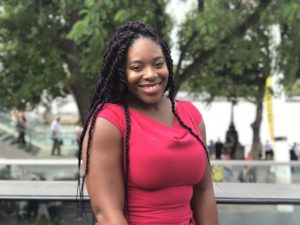
Originally published in the October 2020 issue of Bulletin
October is Black History Month and a time to recognise the central role that Black people have played in our history – but with this comes the danger of tokenism. Naomi Ignatius reminds us how dangerous tokenism can be, and what real diversity looks like.
The raised profile of the Black Lives Matter movement has led to a lot of conversation around diversity in the workplace and how to address this. While this can be seen as a positive move towards inclusion, it is imperative that organisations and professions avoid tokenism within their recruitment processes. Tokenism can be defined as ‘the practice of hiring or appointing a token number of people from underrepresented groups in order to deflect criticism or comply with affirmative action rules’. This can cause more harm than good because it masks inactivity. Instead of genuine diversity being at the heart of a team or organisation, ‘optical allyship’ is observed instead, where visuals and statements are misleading, and cause individuals to believe that their team or organisation genuinely cares about diversity. In order to tackle tokenism, it’s important to truly value the benefits of diversity, and to go about increasing diversity in an authentic manner.
Truly diverse teams make better decisions, are more creative, have reduced staff turnovers and – most importantly within the speech and language therapy profession – they better reflect the client groups they serve. This also means that when recruitment decisions are being made, instead of thinking of the ‘culture fit’, recruiters consider how people of colour can add to a team’s culture. Once steps to increase diversity that avoid tokenism have been taken, it is also important to consider how diverse teams meet the needs of SLTs of colour, as diversity without true inclusion impacts on the experiences and mental health of people from minority groups. Raising awareness around unconscious bias and creating spaces for authentic, honest, and sometimes awkward conversations, needs to happen for continual growth to take place, as well as understanding around issues of race for the workplace to feel like a safe place for minorities.
Naomi Ignatius, Senior critical care SLT
Erum Jamil

Originally published in the November 2020 issue of Bulletin
What happens when you accept your diverse identity as different to the ‘norm’? Erum Jamil explores how her coping mechanisms kicked in when faced with microaggressions.
I’m a final year speech and language therapy student: a working-class, British Asian, Muslim, student SLT.
Throughout my academic life, I’ve been used to being the only Muslim in my cohort and felt indifferent to the lack of diversity on my course. To me, being in a minority felt normal. Or did it?
Was I simply uncomfortable with my differences to the point that I ignored them? My experiences have been built on a discomfort with my identity and tainted with a multitude of microaggressions. These include people never learning to say my name correctly, asking where I’m ‘really from’ and comparing their tan to my ‘tan’. These subtle yet sharp examples had become so common that, instead of expressing how it bothered me, I used humour to deflect the situation, at my own expense.
In truth, I had become just as complicit in subjecting myself to these microaggressions – by responding when people called me by the wrong name for a whole year, or by joking that my SLT name should be ‘Erin’ because on placements my name was considered ‘too confusing’. I disassociated myself from my identity for the convenience of others. I kept silent about how the notion of meeting new people on placement triggered a deep-rooted anxiety about my identity. I feared people would negatively react to me or deem me not as worthy as my peers.
This is something I have never reflected on to practice educators or even just with myself. But why didn’t I, when self-reflection is a skill that is drilled into us? Only now that the lack of diversity in speech and language therapy has been acknowledged, and opened up conversations on the subject, do I feel I can finally find my voice and allow myself an honest outlet for my feelings.
But being open about who I am, and reflecting on my experiences as an ethnic minority within the profession, is just the start. It is only by reflecting on and confronting my own discomfort that I can begin to have these conversations with others and strive to diversify minds, as well as our profession.
Erum Jamil, @ErumSlt
Dr Sharon Adjei-Nicol
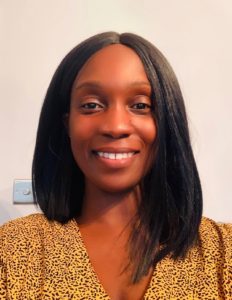
Originally published in the December 2020 issue of Bulletin
Images of SLTs in twinsets and pearls may be long gone but, as Dr Sharon Adjei-Nicol discovered, other stereotypes about what SLTs look like still linger.
Over the past year there has been a notable shift across the profession, as well as calls to action to address the issue of diversity within speech and language therapy. Reflecting on my own experiences as a Black SLT, I have found that what some might see as historic stereotypes, such as SLTs wearing ‘twinset and pearls’, or only being white, middle-class females, are actually assumptions that persist today, and influence how Black, Asian and minority ethnic SLTs are perceived. A recent experience highlights this.
During a care home visit, and while preparing for the start of a therapy session in a client’s room, a multidisciplinary team (MDT) member knocked on the door and informed me that the client “could not have visitors right now”, as they were expecting an SLT to “see him any minute”. Given I was there at the exact time as the SLT they were expecting, it is interesting that I was not automatically presumed to be the therapist. I waited a few seconds for the MDT member to process what was happening and realise her mistake, but she did not. When I responded that I was, in fact, the SLT, the look of shock was one that I and other Black, Asian and minority ethnic SLTs have seen many times before.
Fortunately, I am finding this happens less and less frequently than it did when I first started working with adults 16 years ago. I remember queuing to register for a specialist interest group meeting (now known as a CEN) as a newly qualified SLT. At the time, I was presumed by one of the organisers to be in the wrong place. While there is still much to do, a lot has changed since then. I am encouraged to see the gradual changing demographics of the profession, and it is great to see platforms like Bulletin encouraging open and honest reflection and discussion.
Dr Sharon Adjei-Nicol, SLT in independent practice and senior lecturer, University of Greenwich, @AcquireSLT
Anya Clarke, Awurabena Kessie and Bunmi Ogunbanke
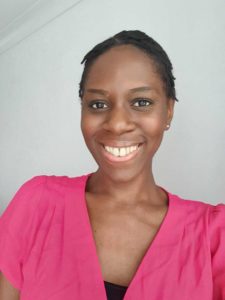
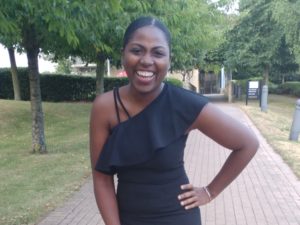
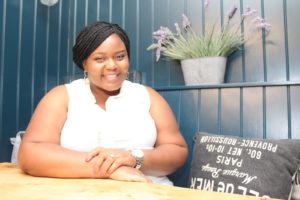
Originally published in the January 2021 issue of Bulletin
After reflecting on their personal experiences of being ethnic minorities within the profession, Anya, Awurabena and Bunmi – the creators of the #ListenIn podcast – crafted a space to share their journey to being authentically themselves within the workplace. They shared some of their challenges with us.
Q: Was the issue of diversity discussed in your training?
The lack of diversity within the profession was never discussed. At university we had lectures discussing social contexts and the importance of considering client backgrounds, but no-one ever talked about the social contexts within the predominately white, middle class and female profession we were entering.
Q: What did this mean for you in your everyday work?
We stood out. Going into our first roles, we struggled to be ourselves – we looked different and had different accents. Our hair was different, and we were treated differently by some of our colleagues. This left us feeling like we didn’t belong and were holding onto our jobs by pieces of thread.
We feel like we can’t bring our style, accent, culture, music, hair and interests to work for fear of being ‘put in a box’. Some individual examples:
- When I was giving my colleagues lifts to work, I found myself automatically switching off the hip hop music I would normally listen to and turning the radio to a more ‘mainstream’ channel.
- When I prepare my lunch, I stop and think, can I take this in? Will it bring up questions with a negative tone, including: ‘What’s that smell?’ Sometimes it’s easier to just stick with a simple sandwich or salad.
- I remember I was initially very conflicted between blending in by wearing wigs or standing out by rocking my hair naturally.
- After the first two days, my mind was made up. How will they know we have different hair textures if I blend in?!
Q: What are your hopes for the profession going forward?
Being an ethnic minority in this profession means that many of us are managing internal as well as external difficulties. In order for diversity to flourish and be accepted as an asset, it is vital that an environment is created where people feel that they can be their true, authentic selves, without the fear of being judged, stereotyped or discriminated against in the workplace.
Anya Clarke, Awurabena Kessie and Bunmi Ogunbanke
Follow @hashtaglistenin on Twitter or tune into the #ListenIn podcast.
Natalie Smalling
Natalie Smalling discusses how acknowledging the nuances within racial discrimination is necessary if a genuine understanding and allyship with others is to be found.
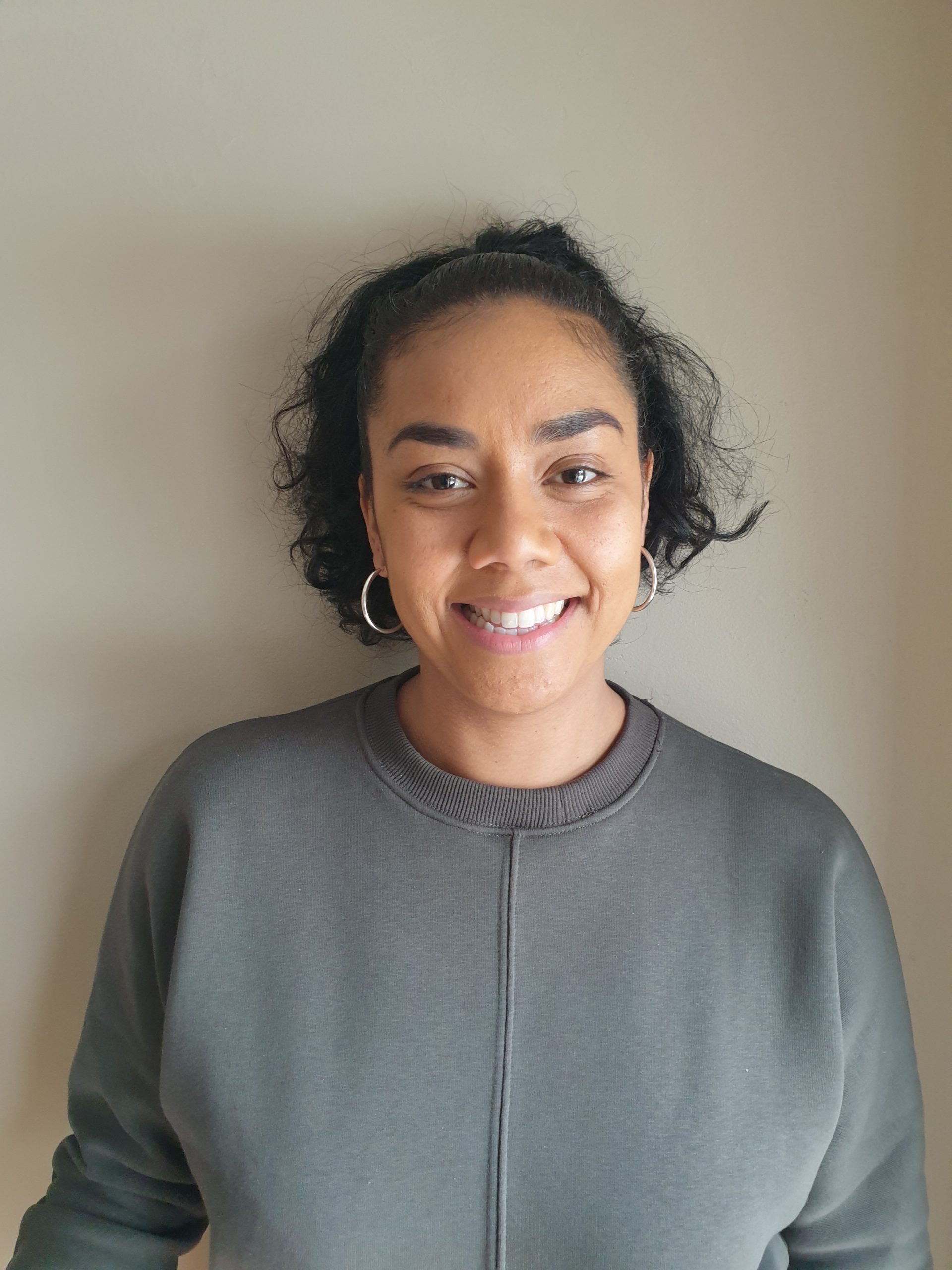
Originally published in the Spring 2021 issue of Bulletin
In my experience, talking about colourism (ie prejudice against individuals with a dark skin tone, typically among people of the same ethnic or racial group) leaves many feeling uncomfortable. However, the denial of its existence, or lack of acknowledgement, means one remains complicit in a system that does not benefit Black people and those with darker skin.
Being of Black, Asian and white heritage means I have received a privilege not offered to people with darker skin. My lighter skin tone and straighter hair attracts comments such as, ‘you have a nice caramel skin tone’ and ‘isn’t your hair lovely’. In contrast, it’s not uncommon for Black women and girls to hear comments such as ‘you’re pretty, for a dark-skin girl’ and ‘you don’t need to wear sunscreen, you won’t burn’.
Do I know that the world sees me as non-white? Yes, but I’m also acutely aware that I’m deemed a more ‘acceptable’ version of Black than someone who has a darker skin tone than me. Why? Because I never question wearing my hair out for fear that it might be seen as ‘unprofessional’, although I know many Black women who would.
I think it’s time we all opened our eyes to the difficulties faced by darker-skinned people, because only then can real change be implemented. Ignoring an issue because it doesn’t affect you doesn’t mean it’s not happening. Being an ally in the fight against racism also includes calling out discrimination and prejudice against individuals with a darker skin tone.
Natalie Smalling, natalie.smalling@gmail.com
Yasmin Jacob
Yasmin Jacob discusses how acknowledging the nuances within racial discrimination is necessary if a genuine understanding and allyship with others is to be found.
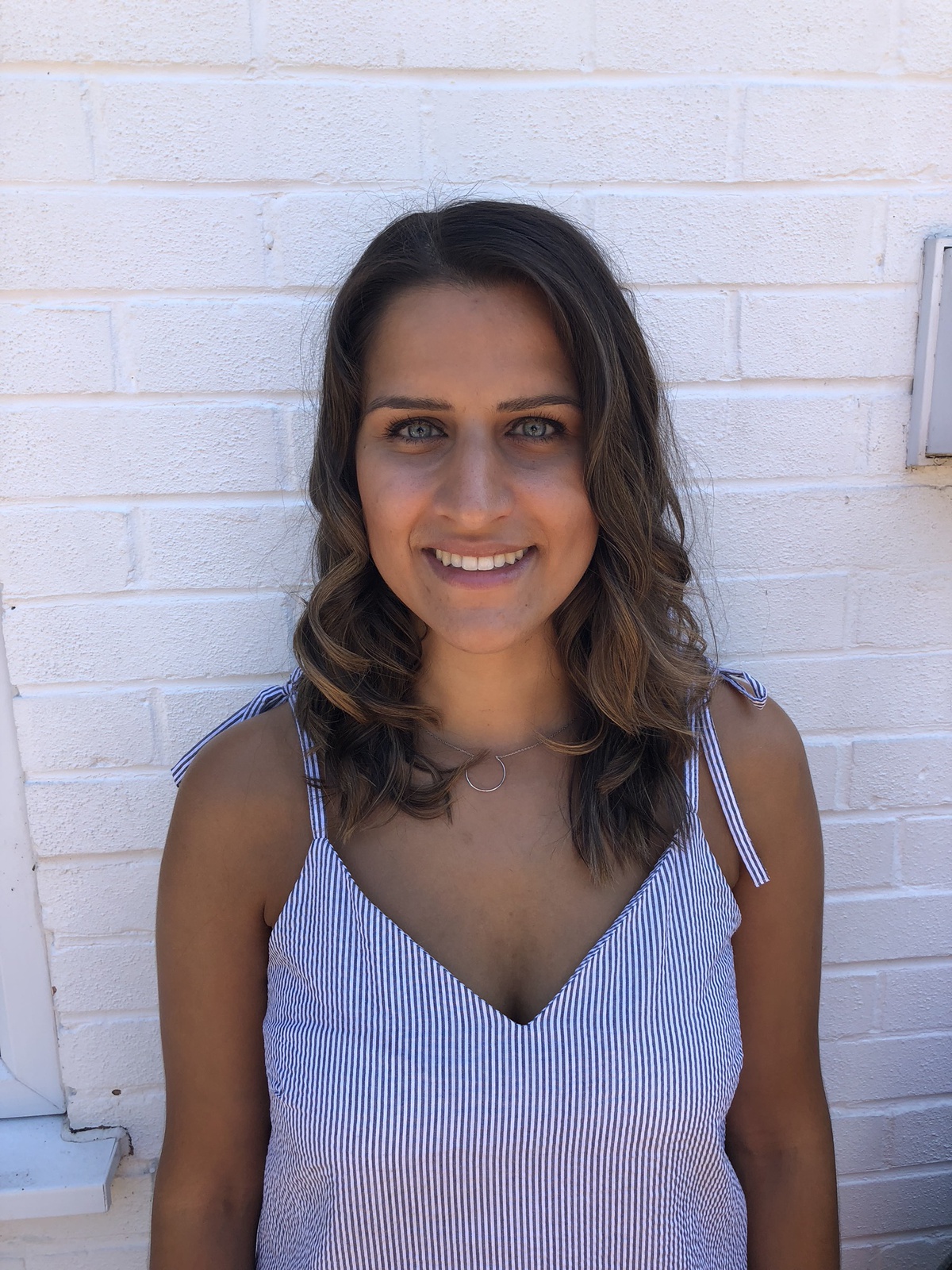
Originally published in the Spring 2021 issue of Bulletin
Wanting to feel part of a group is something many of us will have experienced, but when the majority of your workplace doesn’t look like you, it is often impossible to feel as though you belong. Humans naturally want to fit in and feel accepted by the group of people they find themselves amongst.
But, as someone who is mixed-race and bilingual, I belong to multiple groups when it comes to race and culture. Because of this, I am often encouraged to see patients who are ‘similar’ to me – that is, patients who also do not reflect the majority of SLTs in terms of their race and culture. But if a patient and I are both different from the majority, does it follow that we must therefore be the same as each other? Or that I am the best SLT to work with that patient? The answer is ‘not always’, although having a greater understanding of culture, race and religion is something that, as an SLT, can only be a good thing.
I always try to understand my patients and put myself in their shoes. This is easier when I have patients who speak the same languages as me, or are culturally similar. I love being able to share similar stories with them, or discovering that we have a shared understanding about a topic. When this happens, I notice how this has a positive impact on the patients and also on my day at work. Knowing that you have been able to share something with a patient is really special, and I have my diverse background and my own culture to thank for that.
I am so proud of my multicultural background and the opportunities and sense of job satisfaction it has given me. Being able to share a sense of belonging with patients is truly one of the greatest pleasures.
Yasmin Jacob, yasmin.jacob@nppneurogroup.com
Shafaq Hassan on the struggles faced by ethnic minority SLTs
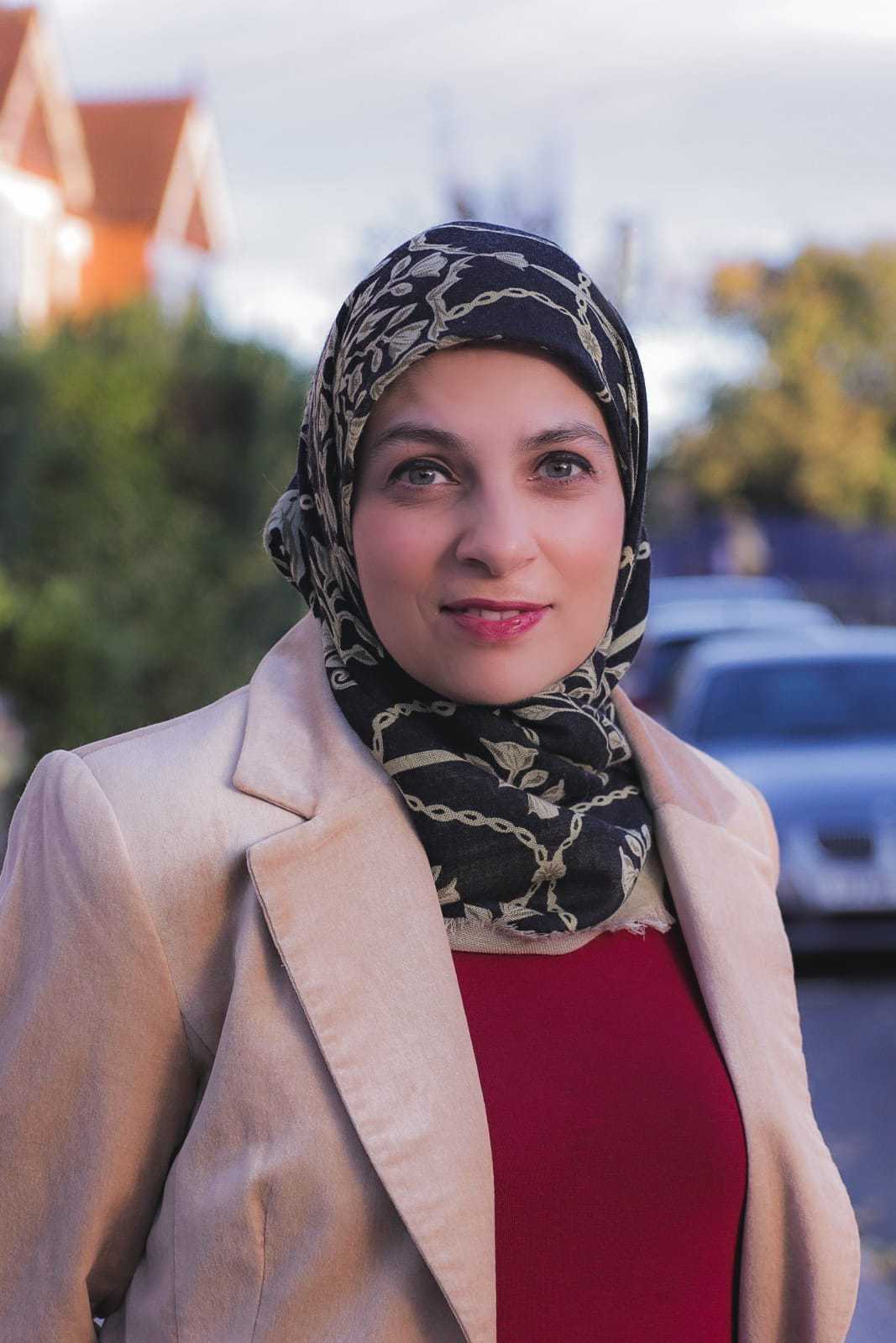
When applying and going for interviews as a Muslim SLT, a lot of prospective employees had reservations employing someone from my ethnic/religious background.
I was shortlisted for jobs I applied for, which felt great, but it was demoralising to be turned away because apparently I “didn’t have enough experience for a Band 5 job”. I must have gone through the process at least 15 times.
My turning point came when I was turned away (three times!), from my dream job at a world-renowned hospital. It was the most surreal experience; the interviewer had an instant disliking to me. For a second, I remember thinking “does my outfit clash with my headscarf?”
I left the interview in disbelief – I was sent home with homework! The interviewer told me to go home and write up an explanation of a clinical term. I was shocked to say the least, as I got a distinction in Clinical Management as part of my master’s. I knew I was a good therapist and I wanted to help the community as I was trained to do.
After that experience, I decided to start working independently. It was a challenging journey, but I hoped to make a place for myself in speech and language therapy. I got clients by word of mouth, which led to me being invited on international TV and media platforms for interviews. I achieved my goal of raising awareness of speech therapy and communication difficulties within the ethnic minority community. Furthermore, doing livestreams helped me reach out to the community directly, addressing matters such as cultural taboos and promoting inclusion for people with special needs. My identity was now my strength.
I was recently invited to speak at Meet the Expert, a diversity special webinar at University College London. It was empowering to share my story and shed light on the lack of diversity, and the struggles faced by ethnic minority SLTs.
Don’t we all want fellow ethnic minority students and therapists to be confident in who they are? My advice is to make your identity your strength. It is our identities which enrich our profession and make us brilliant at what we do. Collectively, we reflect the community we serve.
Shafaq Hassan
Uncovering the experiences of Black, Asian and ethnic minority SLTS – Research by SLTea Time podcast
SLTea Time, a podcast created to explore issues affecting Black, Asian and ethnic minority SLTs and clients, received over a hundred responses to a poll asking, “Have you experienced a microaggression as a student or SLT?”
The poll, launched on Instagram and Twitter, found that 65% of respondents, which included students, SLTs and lecturers, reported experiencing a microaggression. Microaggressions are subtle, verbal or non-verbal exchanges which are “put downs” aimed towards individuals from marginalised groups (Pierce et al, 1978).
Our group, SLTea Time podcast, created the poll and a podcast on the topic of microaggressions to explore racial discrimination experienced by SLTs. We hosted Alysa Jeraj and Lorraine Omeku, two speech and language therapists, with Ammeline Wang, a criminology student investigating microaggressions.
They discussed how to identify microaggressions, examined its impacts and ways to address microaggressions as the profession continues to diversify. The number of Black, Asian and ethnic minority students on SLT courses is growing annually, but courses are still much less ethnically diverse than the student population as a whole (RCSLT, nd).
“It’s not always verbal… Just the way you are made to feel a little bit excluded… For example, I was in a meeting in a school and one of the other people in the meeting was addressing a lot of things to another therapist who was in the room. Even though I had things to say and I said what I needed to say, it seemed that what I said wasn’t valid and it was always redirected to the white person in the room,” said Omeku.
The poll identified how microaggressions were experienced at the hands of supervisors, other students, colleagues, lecturers, and service users. Microaggressions have been categorised into three types; microassaults, microinsults and microinvalidations (Sue et al, 2007).
Microassaults are conscious and intentional discriminatory behaviours. Microinsults are verbal or nonverbal communications that convey rudeness or demean racial heritage. Microinvalidations are often unconscious verbal comments or behaviours that exclude or nullify the experience, thoughts and feelings of a person of colour, for example comments like “Where are you really from?” and “I don’t see colour”.
When asked about the impacts of microaggressions, one of the respondents of the poll commented, “If I didn’t have a support network in the course, I probably would’ve changed courses or left the field altogether.”
Another shared, “I left my job because I couldn’t tell anyone about a bad experience with a manager.”
Many described how these experiences left them “contemplating whether speech and language therapy was the right career for them” with feelings of “low confidence” and “anxiety”.
Salorzano et al (2000) suggest these experiences may have significantly more of an influence on anger, frustration and self-esteem than ‘traditional’ overt forms of racism. Additionally, these have detrimental effects on mental health for Black, Asian and ethnic minority students and staff as a result of the inequitable terrain they face at university (Arday and Mirza, 2008).
Addressing microaggressions is crucial, and this includes reporting incidents in confidence and raising awareness. The ways in which we train and educate within our profession, prioritise research and build Black, Asian and ethnic minority networks to create inclusive communities for clinicians to feel safe is imperative.
Listen to the podcast episode discussed in this article (Season 2, Episode 4) and follow @SLTeaTime on Twitter for more conversations and updates.
Sahar Nashir (@Sazthespeechie), Marium Abdul Sattar and Suleka Mohammed (@SulekaSLT)
To explore the research cited here, as well as further reading lists, see our main resources page.
This year’s Black History Month, we asked our Focus on Diversity columnists and members of our Board who they will be celebrating. To learn more about these incredible people, we’ve pulled together a selection of resources.
Join us on Twitter and Instagram to find out more about these important figures throughout October.
The Venerable Mina Smallman
Mary Seacole
- Mary Seacole Trust
- BBC historic figures – Mary Seacole
- David Harewood: In the Shadow of Mary Seacole – ITV documentary
Katherine Johnson, Dorothy Vaughan, and Mary Jackson
- Hidden Figures (2016)
- NASA’s real ‘hidden figures’ – Space.com
- Katherine Johnson obituary – New York Times
Olaudah Equiano aka Gustavus Vassa
- Black and British: A Forgotten History by David Olusoga
- Olaudah Equiano – BBC historical figures
- British Library The Life of Olaudah Equiano –
Dusé Mohamed Ali
- Dusé Mohamed Ali – BlackPast
- Duse Mohamed Ali by Mustafa Abdelwahid
- Duse Muhammad Ali: Biographies of Great African People by Faheem Judah-El DD
- The Oxford Companion to Black British History edited by David Dabydeen, John Gilmore, and Cecily Jones
Claudette Colvin
- Claudette Colvin – The Guardian online
- The 15-year-old who came before Rosa Parks – BBC News
- Claudette Colvin: Twice Toward Justice by Phillip Hoose
Margaret Busby
- The UK’s first Black female publisher – The Guardian
- Margaret Busby to receive The London Book Fair Lifetime Achievement Award 2021 – Blackhistorymonth.org.uk
- In conversation with Margaret Busby – Oxford Brookes University
Malcolm X
- Malcolm X – History.com
- The day Malcolm X was killed – The New Yorker
- The legacy of Malcolm X – The Atlantic
- The Autobiography of Malcolm X by Alex Haley and Malcolm X
Rosa Parks
- Rosa Parks – National Women’s History Museum
- How history got the Rosa Parks story wrong – The Washington Post
- The Rebellious Life of Mrs Rosa Parks by Jeanne Theoharis
Marsha P Johnson
- The Life and Death of Marsha P Johnson (2017) documentary
- Who was Marsha P Johnson and why were they so important? – BBC Newsround
- Marsha P Johnson’s activism matters now more than ever – Vogue
Maya Angelou
- Maya Angelou – Poetry Foundation
- Maya Angelou obituary – The New York Times
- And Still I Rise by Maya Angelou
- Maya Angelou: And Still I Rise (2016) documentary
Bessie Coleman
- Bessie Coleman obituary – The New York Times
- Bessie Coleman biography – National Women’s History Museum
- Bessie Coleman – Cradle of Aviation Museum
